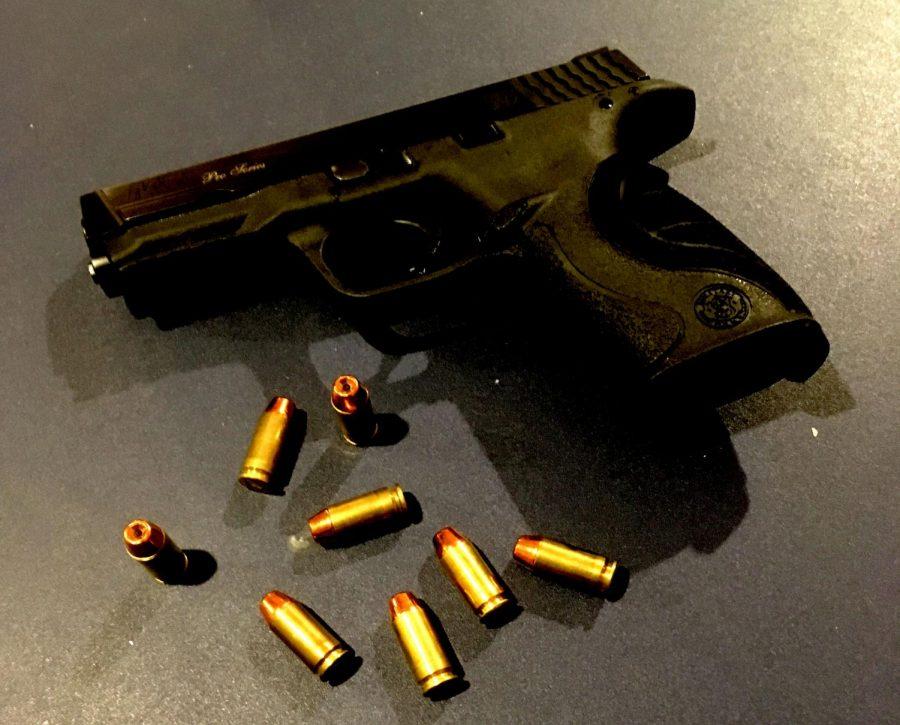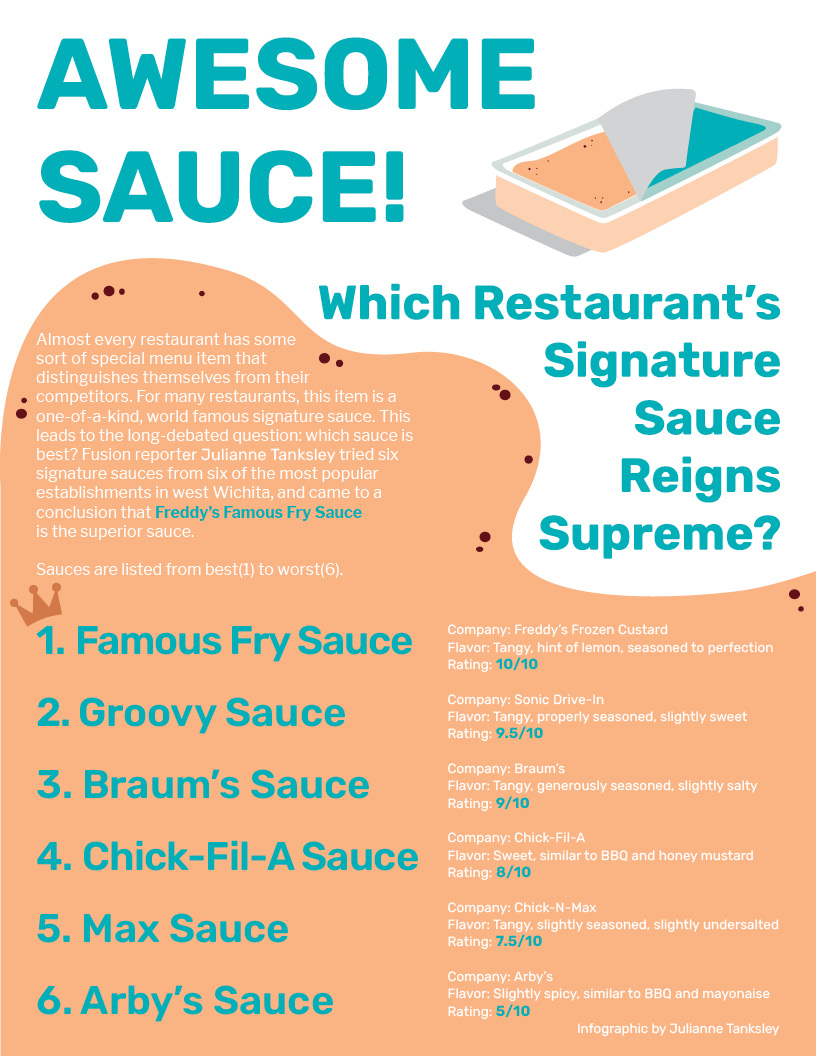Right to Bear Arms Inside the Classroom
Should teachers be able to possess firearms in the classroom setting at Maize South High School?
Standard teacher carry is S/W .40 as shown, or Glock 19, 9 mm, commonly used by law enforcement.
October 30, 2019
Two weeks ago, Florida state Senate Bill 7030 was implemented in response to the Parkland shooting last year. It’s called the “Guardian program.” 38/67 counties in Florida will participate in the program, and over 1,000 teachers are now armed inside our American classrooms.
With school shootings on the rise in the past two decades, many schools have police officers on school grounds during hours for protection. However, this is not the safest solution for our students. The USD 266 school district should take Florida’s guardian program into consideration for our own district. Not only by example of Florida, but 14 other red states including Texas, Montana, and Idaho.
The guardian program entails a total of 144 hours of teacher training with a local police department. The training includes everything from firearm safety to hand to hand self defense (making sure no one gets your gun.)
Teachers who partake are subject to psychological evaluation, background checks, and registering with the government as a “guardian.” The program is completely optional to all teachers who desire to participate.
Unbeknownst to most, all public workers have the right to carry a firearm, and no state or country authority can restrict that. The only exception being a school setting, a hospital, or a mental health facility.
However, removing this legislation would allow teachers to carry and handle firearms. This would therefore benefit the safety of our students by deterring threats and diminish possible damage in our own district. And although the Maize police response time to a threat such as this is around three minutes (per a USD 266 board member Matt Jensby) those three minutes are critical.
“What do all these schools always say when a shooting takes place?” Mr. Christensen, law enforcement and government teacher at Maize South asked. “We didn’t think it would happen here.”
An intruder in a school is about the most extreme and tragic occurrence a student could encounter in their learning environment. And although the Run, Hide, Fight initiative makes students aware, there are grey points at which students and staff alike could be vulnerable to attacks in the common school day.
“I think it makes them aware, but people handle adversity differently,” Christensen said. “If you go back and look at the kids that were shot and killed in Columbine, what did they do? They froze.”
Being in the hallway in between classes, at lunch, or freezing up are all concerns that should be addressed. However with a guardian program, teachers such as Christensen or Mr. Kerr, government and history teacher at Maize South, would be enabled to take protection into their own hands in an unfortunate event such as this.
“With only one cop here, and a thousand kids, that’s a soft target,” Kerr said. “So now if I knew that I was gonna go and wanted to kill a lot of people, if I know it’s not a soft target, I may choose something else.”
Yet while there are teachers throughout the district who would participate in a program such as this, there are teachers who absolutely oppose it and believe the environment would significantly change with the addition of teachers carrying guns.
“I am adamant that I do not want guns in my school,” Mrs. Walston, English and yearbook teacher said. “I don’t think having more guns is going to make a school safer. I think the best way for combating violence before it happens is knowing our student population.”
Sometimes simply addressing student issues can easily prevent horrific tragedies from ever happening in a school setting. Walston believes that relationships within the classroom are key to lowering the chance of violence.
“Yes, I am here to teach literature, and writing, and the skills to make you a better more productive member of society,” Walston said. “But I think a part of that is showing compassion and developing empathy. Teachers have to have empathy.”
Even with a focus on improved relationships, safeguards are still necessary as we can never tell when an incident will occur, and cannot prevent them all due to the complex origin of mass shootings.
“You hear people say video games, you hear people say this or that,” Christensen said. “I ask the kids: do we have a heart issue? That we don’t have a heart for another anymore.”
“It’s complicated, but I think there’s a lot of societal issues,” Kerr said. “Those societal issues could be mental illness, how we treat people with mental illness, the values that are taught at home, ultimately access to guns has always been there.”
USD 266 board member and Maize Chief of Police Matt Jensby believes that the true foundational issue behind gun violence within our schools is the individual student and their state of mind.
“I think first and foremost is the mental health aspect of it,” Jensby said. “I know there’s a lot of talk of lack of empathy in our society. I don’t know the exact cause but I know mental illness is first and foremost.”
A key part of the guardian program is keeping “guardians” anonymous for the safety of the students and the teachers.
“Conceal carry would be my preferred choice and that it would be 100% anonymous,” Jensby said. “Nobody would know, not even principals or other teachers as they could become a target.”
Even with certain protocol and training for “guardians,” Walston simply can’t image Maize South where at any time, a firearm could be within 20 feet of you.
“It’s so scary to think of a building where we’re asking students to come in and feel safe, and to have it be a building where guns are in teacher’s classrooms whether they know it or not.”
However, the adaptable and flexible character among the teen mind would make a guardian program of our own no issue, as guns in the classroom similar to the SRO would become routine.
“Kids get used to things. Metal detectors, drills, kids get used to these things, and it becomes part of them,” Kerr said. “Kids would get used to people carrying guns. Guns aren’t going to traumatize somebody. Guns aren’t going to shoot somebody by themselves. People that are around guns aren’t afraid of guns.”
Since this implementation, Florida has had no incidents and this kind of behavior is more than likely discourages with less “soft targets.” And not only deterring intruders, but mitigating potential harm.
“If they know they are being watched or there is the possibility that they could encounter somebody that is armed that would stop them, I think it is a great deterrent,” Jensby said. “It’s just like lights on your house at night.”
“It certainly wouldn’t encourage it, so even if would help a little bit to deter,” Kerr said. “To me, this isn’t a deterrence issue, this is mitigating the damage issue.”
Whether to deter a threat or mitigate potential damage, there is no better safeguard than an armed and trained teacher who is ready to defend their students.
“If there is a shooter and they are about to come in your door, and you’re a student sitting in one of those desks, would you want your teacher to have a gun? Or not have a gun?” Kerr said.






Wesley Rice • Oct 30, 2019 at 11:03 am
Interesting op-ed. I am curious if you found any sources to back up the claim that “many schools have police officers on school grounds during hours for protection. However, this is not the safest solution for our students.”